Strawberry is a berry that is grown in almost any garden. Recently, a special kind of this culture is gaining popularity - a repair or "reusable" strawberry. This variety of berries favorably differs from the usual traditional varieties in that it allows two during the vegetation period, and with proper care, three, harvesting. How to take care of a patchwork strawberry, we will tell in this article.
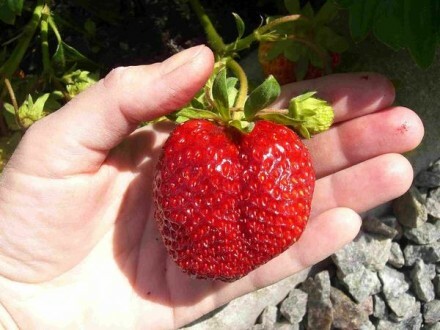
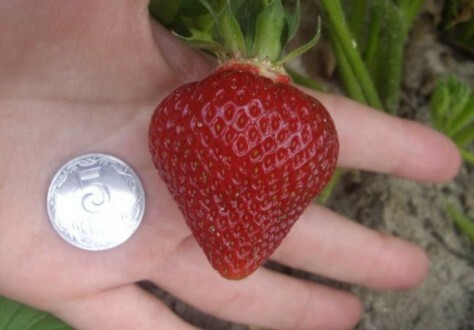
Popular varieties of
Before you start planting any culture, you need to determine the grade. All sorts of repair strawberries are divided into two groups: small-fruited( strawberry) and large-fruited. Let us dwell in more detail on the best of them.
- Ali Baba is a fruit small-fruited variety that forms a powerful bush with a large number of inflorescences. The surface of the berries is colored red, the pulp is white. The variety is characterized by high yield. Bushes well tolerate arid summer and severe winter.
- A forest fairy tale is a sort of garden strawberry that yields invariably high yields. On a compact shrub of this variety throughout the summer ripen sweet and sour fruit, having the shape of a cone.
- Ruyan - early ripening small-fruited variety. Gives very juicy berries with a strong aroma of wild strawberry. Suitable for areas where there are severe winters and dry summers.
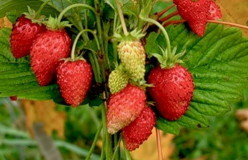 Ali Baba
Ali Baba 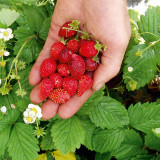 Ruyan
Ruyan
- Queen Elizabeth II is the best remontant variety, yielding fruits weighing up to 50 g( the record is about 100 g).Usually shrubs of this variety are planted on slides or vertical supports.
- Temptation is a large-fruited hybrid, giving very juicy berries weighing up to 30 g. The variety is fruitful from the end of spring up to the first frosts.
- San Andreas is a variety with powerful shrubs and fruits, the mass of which can exceed 30 g. The variety is valued for high yield and harmonious taste of berries.
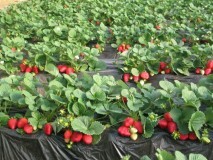 Queen Elizabeth II
Queen Elizabeth II  Temptation
Temptation
Features of different types of
Each kind of repairing strawberry has its own characteristics. They should be taken into account when choosing the material for planting.
- Small-fruited varieties:
- do not form whiskers;
- multiply only by seeds;
- bear fruit throughout the season without breaks;
- does not require special care;
- tolerates high and low temperatures well.
- Large-fruited varieties:
- form a few whiskers;
- yields fruits 2 to 3 times over the whole vegetation period;
- the aging of bushes takes place for 1 year, therefore for the second summer on them small berries grow.
- Hybrids are highly resistant to pests and diseases, but are not capable of reproduction.
Growing seedlings
- It is necessary to take a peat cup or any container of solid material with a diameter of at least 15 cm.
- Tare is filled with soil so that it does not reach the edge by 3 cm.
- Seeds are poured onto the soil surface and sprinkled with a thin layer of dry ground.
- The planting is moistened with a spray gun and covered with a film.
- Pots with seeds put in heat for 3 weeks, do not forget to periodically water. During this time, the seeds must germinate.
- Then shoots are transferred to a well-lit place and grown, like any seedling.
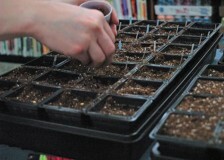 plant seeds
plant seeds 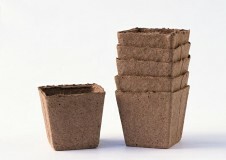 better use peat cups
better use peat cups 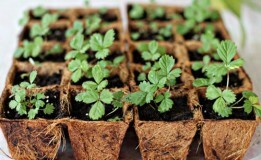 seedlings ready
seedlings ready When the time comes to plant a repairing strawberry in the ground, it must have at least three or four real leaflets.
Site preparation and planting
- Under the beds choose a well-lit fertile area, not exposed to winds. Cooking begins in the fall. Remove the weeds, dig over and infuse humic and phosphoric fertilizers.
- In spring, soil care should be continued.2-3 weeks before planting the seedlings, 5-10 kg of manure or humus is added to it per each square meter.
- In mid-May, they begin planting a repair strawberry.
- Immediately before planting the plants, ammonium nitrate, superphosphate, and potassium salt are added to the soil.
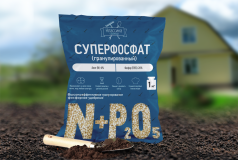
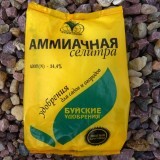
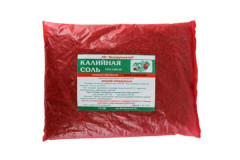
- Strawberries, as a rule, are placed on narrow beds, that is planted in one row. In this case, the distance between plants should be between 20 and 40 cm, and between adjacent rows - 60-70 cm.
- If strawberries are planted in 2 rows, then a distance of 20-40 cm is observed between them, between rows - 70-80 cm.
- For planting, it's best to choose a cool, and preferably a rainy evening.
- On the garden, dig holes and water them. It should be remembered that strawberries do not like too much watering, so the soil needs to be moistened, but not excessively.
- A young plant is placed in a hole together with a clod of earth. The roots are spread as much as possible and sprinkled with soil so that the core remains on the surface. The earth around the plant is gently tamped with palms.
- Until the seedlings are adopted, it is regularly watered, but not fed.
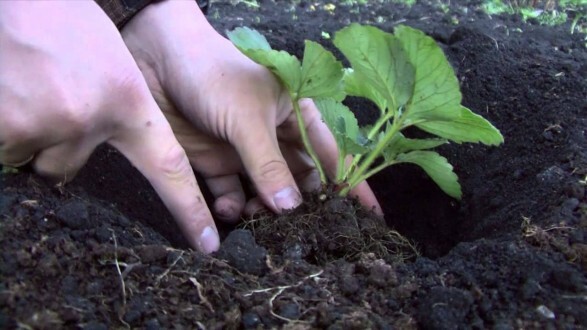
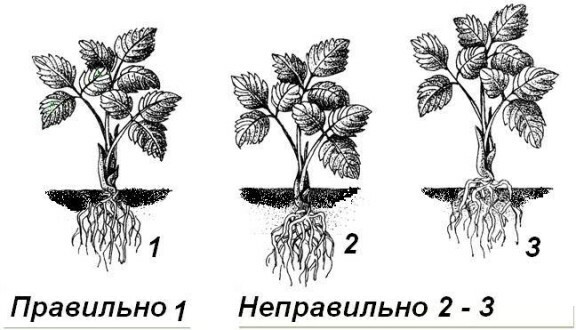
Cultivation and care
Small-fruited varieties are not too whimsical. But large-bodied plants require special attention. If you do not take care of the patched strawberries, the bushes wither and die in the first year after the landing.
- Repaired strawberry, which is grown in the open ground, is demanding for watering. Do not allow the soil to dry out. To keep moisture better, it can be mulched with peat or sawdust. To water strawberries should be in the evening or in the morning, using water, which for a day warmed up in the sun.
- Together with watering, you can carry out and fertilizing the plant with infusion of herbs. Such a nutritional mixture is prepared as follows: in the container lay milled wormwood, nettle and yarrow, fill them with water and leave for a week in a sunny place. During the ripening of the crop, plants need a large amount of nitrogen. Therefore, grassy top dressing can alternate with infusions of mullein or bird litter. The first diluted with water in a ratio of 1 to 10, the second - 1 to 15.
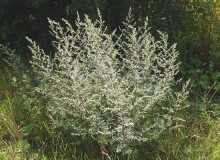 wormwood
wormwood 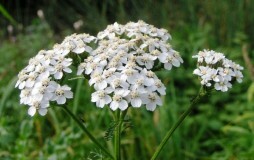 yarrow
yarrow 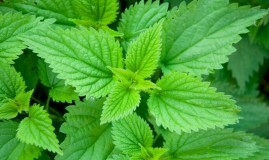 nettle
nettle
- To allow the roots to breathe freely, after rains or watering it is necessary to loosen. This procedure should be done carefully, so as not to damage the roots and mustaches. Mulch and black film will help to keep the soil in a friable state. In addition, they will not allow the growth of weeds, which take moisture and useful substances from the strawberry bushes. In the process of growth, the roots of the plant can be denuded, so during loosening on them you need to pour the soil.
- An important element in the care of repair plants is the pruning of the whiskers as they grow. If you do not remove new outlets in time, the uterine shrub will quickly deplete. If the whiskers are necessary for new plantings, then from several strong bushes remove all the flowers after harvesting the first harvest. In this case, you can get powerful rosettes on the sprouts.
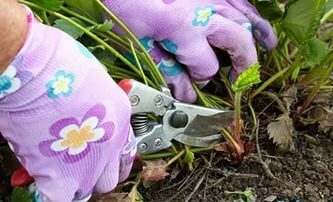
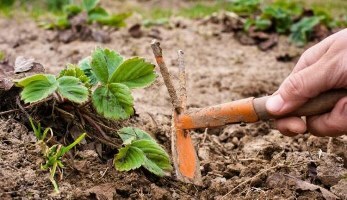
About diseases and pests
Like other plants, the patch of strawberry is susceptible to disease and pest attack.
- Gray rot is a fungus that appears on strawberries in damp and cold weather. The berries are covered with brown spots, on which a white plaque, similar to mold, is then formed. For the prevention of gray rot the strawberry is treated with copper chloride. If the rot begins to affect the plants, the bushes will have to be transplanted. Berries with a fungus must be ruthlessly thrown away. I must say that this disease, first of all, prone to berries lying on the ground. To prevent their contact with the soil, you can pour under the bushes of sawdust, cover the soil with black agrotex or make wire for carcasses.
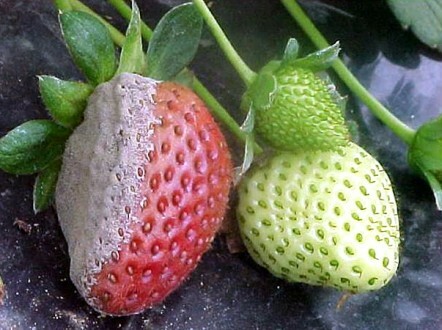
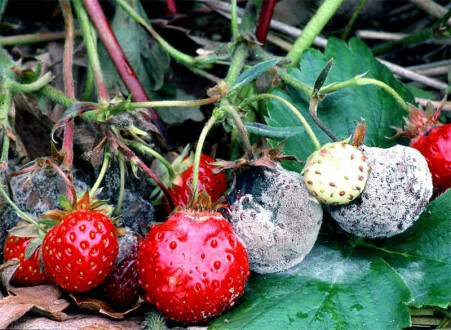
- Powdery mildew is a disease that affects the leaves of many plants, including remontant strawberries. They acquire a brown color and are folded into a tube. In order to prevent powdery mildew in the spring, the bushes are sprinkled with a weak solution of potassium permanganate or colloidal sulfur. Infected plants must be burned immediately.
- Brown spot is a disease that affects the leaves. They become rusty-brown, and the plant dumps them. To avoid infection, in early spring and after harvesting the last crop, strawberries must be treated with copper chloride.
- Strawberry mite is a small transparent insect that damages the leaves. They become yellow and fold. Plants afflicted with mites cease to grow and do not yield crops. To avoid spreading the pest, after harvesting the last crop, the strawberry needs to be sprayed with an aqueous solution of carbophos.
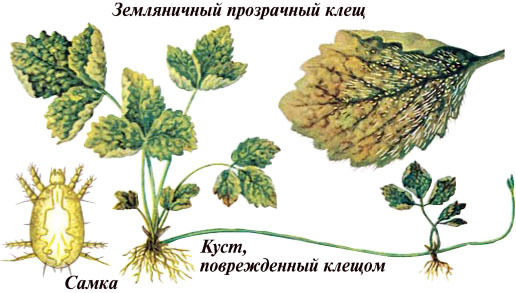
- Buds and young plant leaves are often attacked by aphids. To combat insects use a soap solution with the addition of wood ash. In addition, aphids can be chased away with garlic infusions. It is prepared as follows: 2 heads of garlic rubbed on grater and poured with 3 liters of cold water. Insist the mixture for a week. Then spray the bushes with an atomizer.
- To distract from landings the attention of wasps will be helped by small containers with sweet compote placed around the beds. Birds, most likely, will leave attempts to eat berries if they try to glue plastic or glass red balls hung around the perimeter of landings.

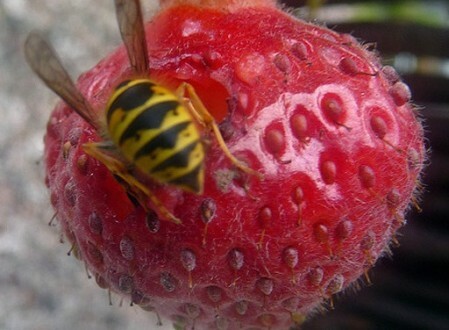
Harvesting
If small-fruited varieties bear fruit permanently, then from large-bodied plants, harvesting is performed in 3 terms:
- in July;
- in August;
- in September.
The third collection of fruits is possible only if there are no early frosts or strawberries are grown in protected soil.
Preparation of berry beds for the winter season
- Before the first frosts, you need to remove all old bushes from the bed.
- The seedlings are relocated to the new location between August and September. By the beginning of cold weather, young plants will take root well.
- As a planting material use a mustache, cut from the uterine bushes of repairing strawberries. Before planting, they can be pre-rooted in peat cups, not separated from the main bush. Pruning is performed immediately before transplantation.
- All the flowers should be removed from the planted seedlings. If they appear again, they must also be cut off. Only in this case can we expect a good harvest for the next year.
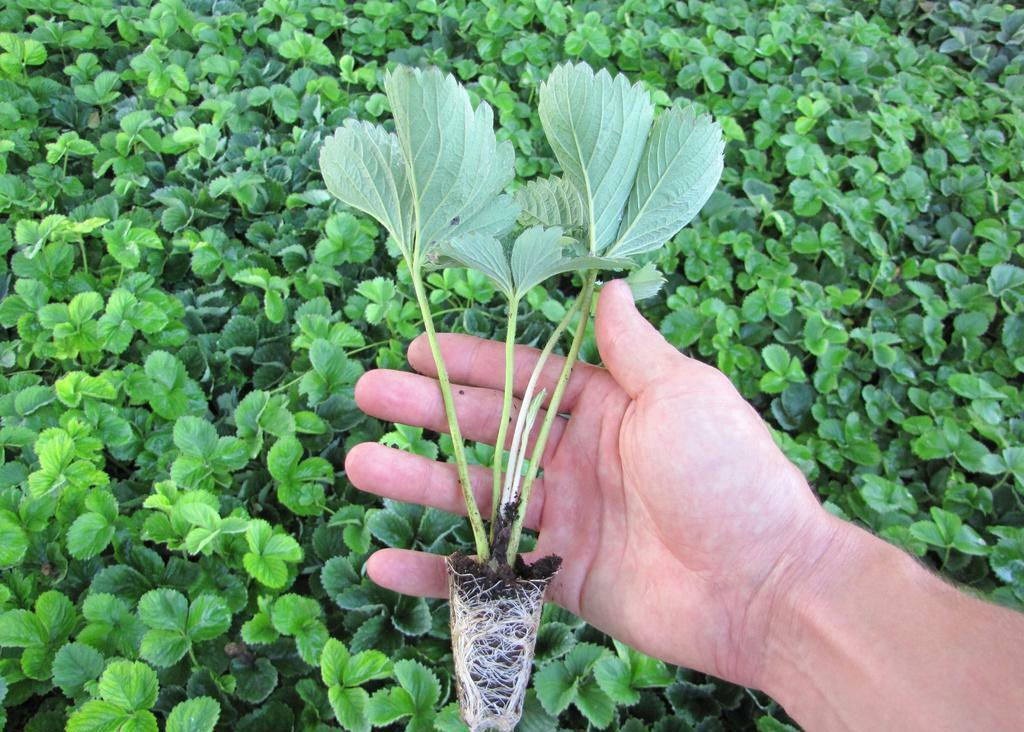
- When frosts hit twice, all the foliage should be removed from the strawberry. After this, beds with new bushes should be covered with cover material. For this purpose, fallen leaves, straw, sawdust and weeds are suitable.
- To protect strawberries from pests during future flowering and fruiting, it is recommended to place garlic in a row between rows of berry bushes.
Although remontant strawberry is demanding to care, it allows you to enjoy berries throughout the summer. When ordinary strawberries are already moving away, new fruit appears on these bushes.
Related Videos:
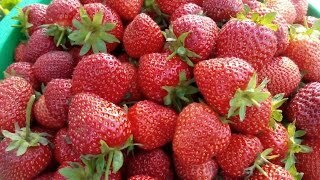 4:21
4:21 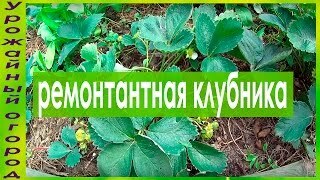 4:30
4:30  5:54
5:54 